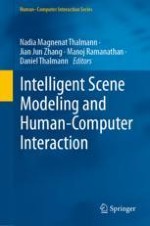This edited book is one of the first to describe how Autonomous Virtual Humans and Social Robots can interact with real people and be aware of the surrounding world using machine learning and AI. It includes:
· Many algorithms related to the awareness of the surrounding world such as the recognition of objects, the interpretation of various sources of data provided by cameras, microphones, and wearable sensors
· Deep Learning Methods to provide solutions to Visual Attention, Quality Perception, and Visual Material Recognition
· How Face Recognition and Speech Synthesis will replace the traditional mouse and keyboard interfaces
· Semantic modeling and rendering and shows how these domains play an important role in Virtual and Augmented Reality Applications.
Intelligent Scene Modeling and Human-Computer Interaction explains how to understand the composition and build very complex scenes and emphasizes the semantic methods needed to have an intelligent interaction with them. It offers readers a unique opportunity to comprehend the rapid changes and continuous development in the fields of Intelligent Scene Modeling.
